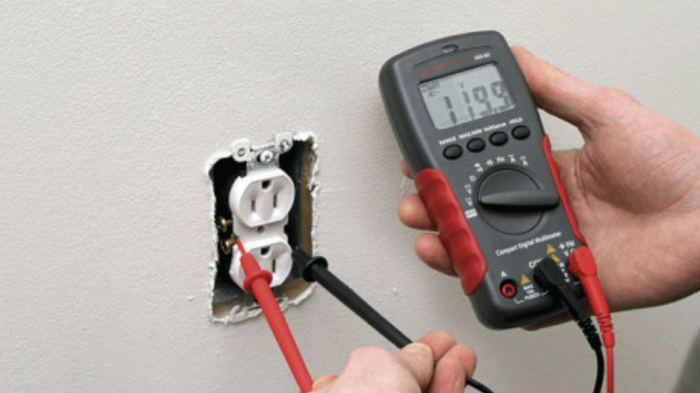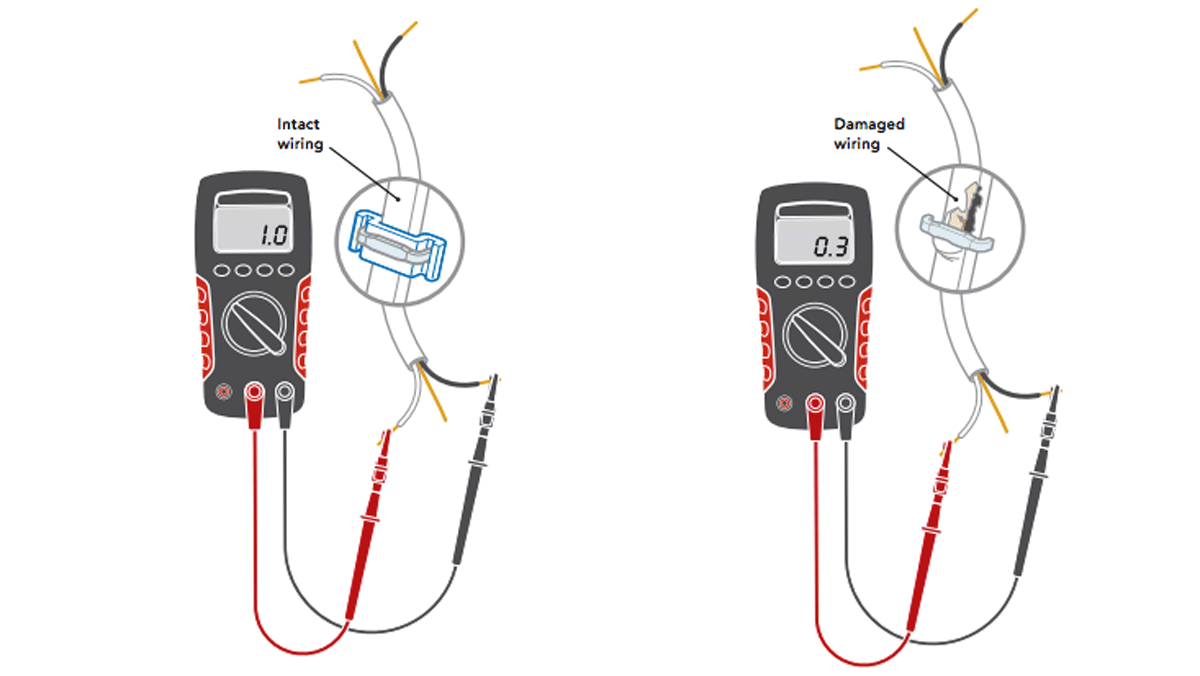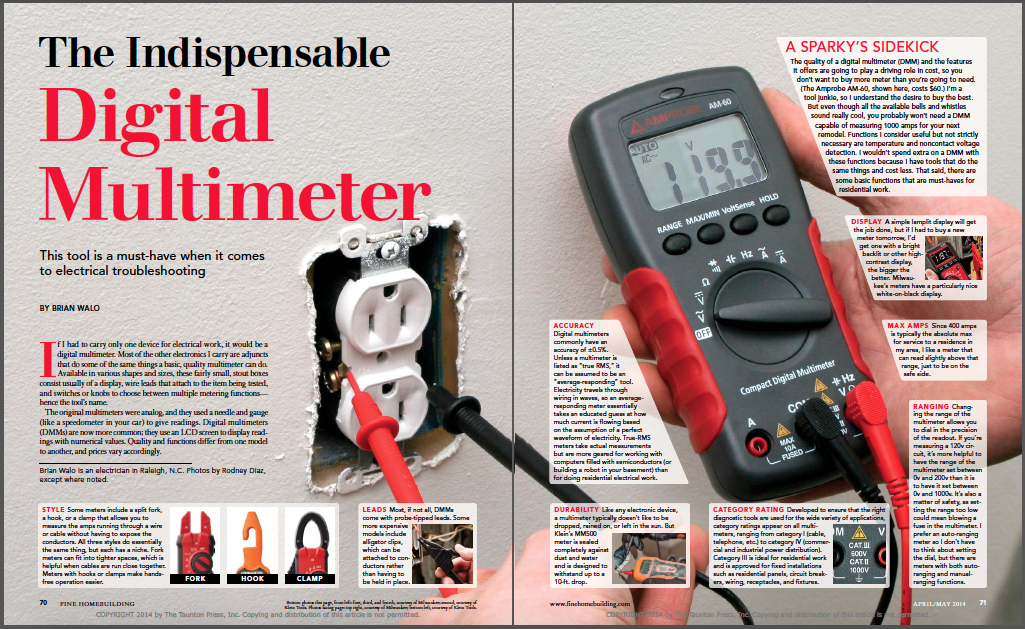The Indispensable Digital Multimeter
This tool is a must-have when it comes to electrical troubleshooting.

Synopsis: In this article, electrician Brian Walo explains what to look for in a digital multimeter (DMM): style (some meters include a split fork, a hook, or a clamp), leads, display, the maximum number of amps the tool can read, whether the DMM has an auto-ranging or manual-ranging feature or both, category rating, durability, and accuracy. A multimeter measures three basic components of electrical energy: volts, amps, and ohms. Walo explains each of these components and provides instructions for using a DMM to measure each one. In a sidebar, he discusses the differences between analog and digital multimeters and why he prefers digital.
If I had to carry only one device for electrical work, it would be a digital multimeter. Most of the other electronics I carry are adjuncts that do some of the same things a basic, quality multimeter can do. Available in various shapes and sizes, these fairly small, stout boxes consist usually of a display, wire leads that attach to the item being tested, and switches or knobs to choose between multiple metering functions— hence the tool’s name.
The original multimeters were analog, and they used a needle and gauge (like a speedometer in your car) to give readings. Digital multimeters (DMMs) are now more common; they use an LCD screen to display readings with numerical values. Quality and functions differ from one model to another, and prices vary accordingly.
Style
Some meters include a split fork, a hook, or a clamp that allows you to measure the amps running through a wire or cable without having to expose the conductors. All three styles do essentially the same thing, but each has a niche. Fork meters can fit into tighter spaces, which is helpful when cables are run close together. Meters with hooks or clamps make hands free operation easier.
 Leads
Leads

Most, if not all, DMMs come with probe-tipped leads. Some more expensive models include alligator clips, which can be attached to conductors rather than having to be held in place.
A sparky’s sidekick
The quality of a digital multimeter (DMM) and the features it offers are going to play a driving role in cost, so you don’t want to buy more meter than you’re going to need. (The Amprobe AM-60, shown here, costs $60.) I’m a tool junkie, so I understand the desire to buy the best. But even though all the available bells and whistles sound really cool, you probably won’t need a DMM capable of measuring 1000 amps for your next remodel. Functions I consider useful but not strictly necessary are temperature and non-contact voltage detection. I wouldn’t spend extra on a DMM with these functions because I have tools that do the same things and cost less. That said, there are some basic functions that are must-haves for residential work.
Accuracy
Digital multimeters commonly have an accuracy of ±0.5%. Unless a multimeter is listed as “true RMS,” it can be assumed to be an “average-responding” tool. Electricity travels through wiring in waves, so an average responding meter essentially takes an educated guess at how much current is flowing based on the assumption of a perfect waveform of electricity. True-RMS meters take actual measurements but are more geared for working with computers filled with semiconductors (or building a robot in your basement) than for doing residential electrical work.

From Fine Homebuilding #242





